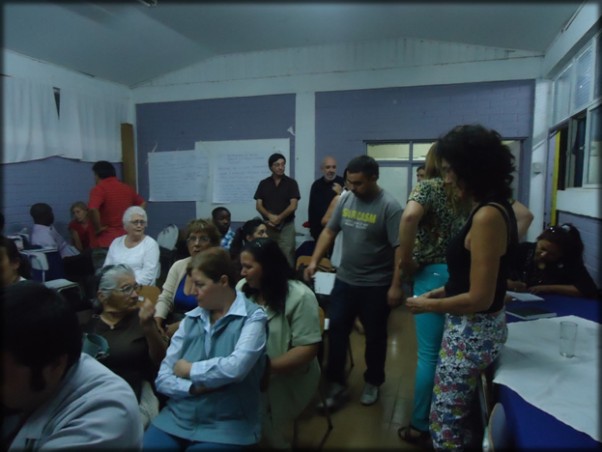This project is was financed by the UK-Aid and DfID. It involved 10 researchers, namelyAlfred Omenya and Grace Lubaale (Eco-Build Africa), Caroline Moser and Denis Rodgers (University of Manchester), Alfredo Roderiguez, Marisol Soborido and Olga Segovia (Santiago Chile), ShivaniSatija (Patna, India) Oliver Jutasonke, JovanaCerapic (Geneva). The study was based on four cities, namely: Nairobi; – Kenya; Patna – India; Santiago – Chile; Dilli – Timor Leste.
This study was investigating conventional wisdom of causes of violence, namely: political exclusion; prevalence of poverty; youth bulges and inadequate consideration of gender based insecurity. It employed participatory violence analysis methods, using ‘tipping points’ and ‘violence chains’ as conceptual frames.
On gender based violence reduction strategies, the study noted that these tend to focuse on women in public domain (Santiago; Patna), ‘invisiblising’ violence in private places (Santiago). Studies tend to ignore (sometimes rightly so) male to male violence in pubic domain (Dilli). Further interventions tend to deal with gender based violence in isolation; while it is actually a part ofcross sectoral / cross societal violence. Gender based violence was the second most prevalent type of violence after political violence and is embedded in economics. Male – female violence is way more complex than patriarchy. Santiago exposed the role of middle class aspiration in difficult economic times; and the silence of middle and higher class women on gender based violations.
Research has tended to focus on non-structural violence against women at the expense of the structural. Policies attempts to address the failure to consider women security in cities, from non-structural crimes perspective.Structural GBV is significant in all the case study cities:
Gender based violence is very structural, generally condoned by society and tends to be embedded in culture (Patna, Santiago & Dilli) – ignored by most researchers ad policy makers
Gender based violence can be very widespread because of structural / socio-cultural infrastructures of violence
Gender based violence can and does tip; the tipping is often unnoticed because of social systems and structures that makes it invisible, e.g. during civil upheavals
Structural gendered violence is often not conceptualized as such, therefore no research, policy or programmatic interventions.
‘Violence at home’ and ‘violence on the street’ (Santiago): Visible violence tends to happen in public spaces (Nairobi, Dilli, Santiago, Patna). Invisible violence does not only happen in private, but tends to be privatized – does not come to the public domain; remains the business of individuals involved; unaddressed by policy or action; acts tend to be criminal yet no action is often taken. Policy can /does responded to visible / public violence through:
- Design, quality, quantity, use of spaces contribute to this
- Policing criminal acts against women happen in public spaces
- Urban spaces can be designed to reduce violence against women
- Mapping of hotspots, suggested in the Nairobi study.
















